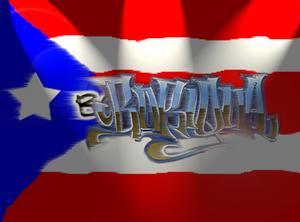The South Bronx is widely recognized as the place where the arts forms that make up the expressive foundation of hip-hop-MCing, or rhyming; DJing; breaking (b-boying/b-girling); and graffiti writing-first came together under very specific terms during the first half of the 1970's. African Americans, Puerto Rican, and West Indians were the groups most heavily involved in the development of these expressive forms (10).
Puerto Ricans made up the majority of the population in the South Bronx at the time. Together with African Americans and other Caribbean people, they accounted for an overwhelming proportion of the population in the impoverished Bronx area in 1970. Consistent with these groups' class standing, hip-hop was created by poor and working class youth. In the words of Q-Unique and b-boy Ken Swift, among countless others, it began as a ghetto phenomenon. (11)
Puerto Ricans were, for the most part, welcome and active participants in hip hop. But even during these early times, Puerto Ricans had to step lightly on hip-hop's cultural ground-particularly when it came to MCing and DJing. They were largely considered partners in creative production, although at times the bond was reduced to a junior partnership.
The perception of Puerto Rican full entitlement to graffiti and breaking versus their perceived limited entitlement MCing and DJing could be traced to the overwhelming participation of Puerto Ricans in the first two.
Puerto Ricans were initially a confusing lot because being even more visibly multiracial than African Americans; they could not be easily cast as black or white. Eventually, Puerto Ricans became a new racialized subject, different from both but sharing with African Americans a common subordination to whites. Puerto Ricans came to be categorized as dark. Although they were different from African Americans, they share with them a multitude of social spaces, conditions, and dispositions. Points of contention and separation might arise between the two groups, but there is a fundamental shared exclusion from the white, middle-class world.


